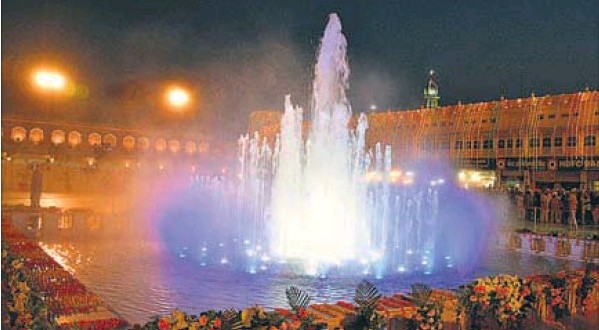Amritsar, Punjab: On the eve of Diwali, Punjab chief minister Parkash Singh Badal dedicated the first phase of the Golden Temple plaza to the people, with the promise that his government was committed to making Amritsar a heritage city.
“The heritage city project is in the pipeline. Like all major projects, it will take time to put it on track. However, we have already begun the groundwork,” Badal told the media after inaugurating the plaza on Wednesday.
The CM, who was accompanied by deputy chief minister Sukhbir Singh Badal and Union food processing minister Harsimrat Kaur Badal, said funds would be sought from the Centre for the project.
He added that the Golden Temple plaza was built with the aim of spreading the message of love and communal harmony.
Others present on the occasion included local bodies minister Anil Joshi, Akal Takht jathedar Giani Gurbachan Singh, Shiromani Gurdwara Parbandhak Committee (SGPC) chief Avtar Singh Makkar and Delhi Sikh Gurdwara Management Committee (DSGMC) chief Manjit Singh GK.
CONTROVERSIAL PROJECT
The plaza project has had its share of criticism, with heritage lovers accusing the state government of destruction of heritage of the holy city, including areas in the vicinity of the Golden Temple.
Prof Balwinder Singh of Guru Ram Dass School of Planning, Guru Nanak Dev University (GNDU), said, “In the name of beautification, we are fixing marble in every nook and corner of the shrine and even outside. The old buildings on the periphery of the plaza are being concealed behind a wall of marble. Has our heritage begun looking ugly?”
For mer SGPC secretary Kulwant Singh said, “When Guru Ram Dass ji established the shrine, he attached business establishments with it. We have demolished this heritage.”
Environmentalists such as Deepak Babbar of Mission Agaaz questioned the use of marble, pointing out that in the summer, it would be tough for pilgrims to walk barefoot on the plaza surface.
However, despite the criticism, the SGPC had given its consent for having a marbled open space where pilgrims could sit and listen to kirtan. The gurdwara body argued that the narrow lanes and overcrowded bazaars around the shrine had outlived their utility.
Source: HT
 Sikh Sangat News Celebrating Sikh culture and sharing Sikh voices
Sikh Sangat News Celebrating Sikh culture and sharing Sikh voices

